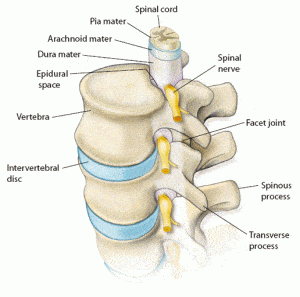Cervical= having to do with the spine in the neck
Spondylotic= having to do with spinal degeneration
Myelopathy= damage to the spinal cord
Cervical spondylotic myelopathy is damage to the spinal cord in the neck.
The spinal cord begins at the base of the brain and runs down through the spinal canal, an enclosed tube made of bones, cartilage and ligament tissue of the spine. The spinal cord transmits electrochemical signals between the brain and the body. The spinal cord is surrounded by a few millimeters of fluid-filled space, which helps to protect it from trauma and allows flexibility without injury to the spinal cord.
Myelopathy, or damage to the spinal cord, can occur for a number of reasons. The most common cause of myelopathy is when the spinal cord is compressed, or squeezed. This compression disrupts normal nerve transmission. Arthritis of the spine, or spondylosis is the most common reason the spinal cord is compressed.
Spondylosis refers to degenerative, or age-related, changes in the spine. These changes include disc degeneration, bone spurs, and thickened ligaments.
Cervical spondylotic myelopathy, therefore, is myelopathy (spinal cord damage) caused by spondylosis (degeneration) in the cervical spine (neck). It affects the fibers of the spinal cord that transmit impulses to the arms, hands, and legs. As a result, it can cause weakness, numbness, tingling, or rarely, pain in these areas.

| 


